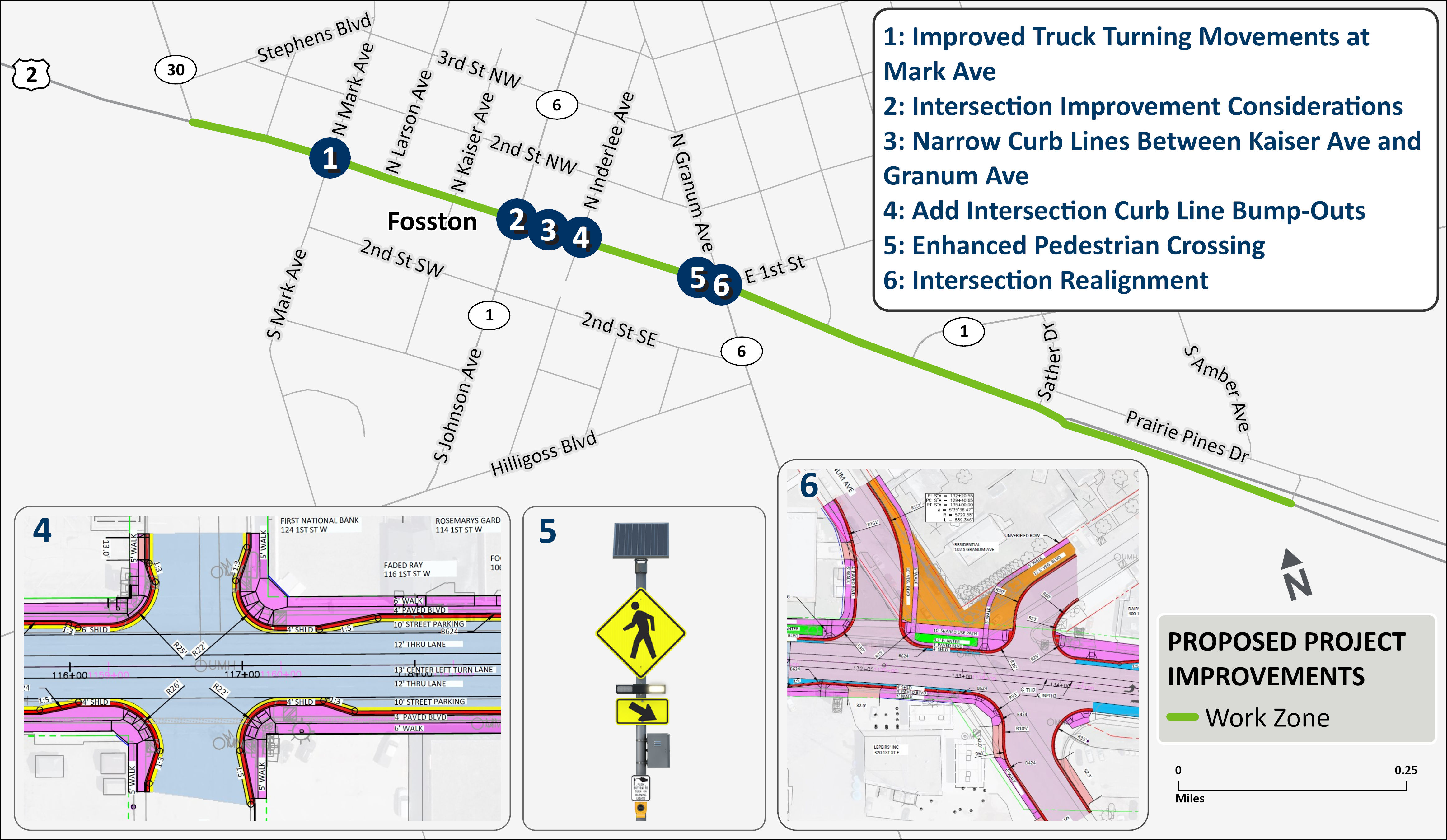About the project

In 2027 MnDOT will reconstruct Highway 2 in Fosston. The multi-modal improvement project includes:
- Resurfacing
- Sidewalk upgrades
- Corridor lighting
- Utility improvements
Stay involved
Join MnDOT for a listening session on June 23. Among items of discussion is the traffic signal at Johnson Avenue. It is due for replacement soon and is being evaluated for removal because the traffic volume does not meet the minimum standards to justify the need for a signal.
Along with an update on the 2027 project, participants will learn more about traffic signals, can ask questions and provide comments with project staff.
Listening session
- Fosston High School Gymnasium
- June 23, 4:30 p.m. - 6:00 p.m.
Learn more
- The highway was striped to a three-lane section in the summer of 2022. This followed a years-long evaluation in which MnDOT worked with a locally led Community Review Panel to identify corridor concerns and propose possible alternatives that could better suit business owners, motorists and pedestrians better.
- Visit the About page to learn more about the Corridor study
- Download the Final report

